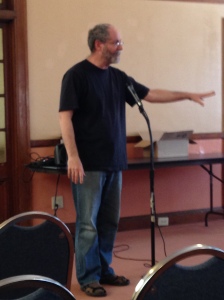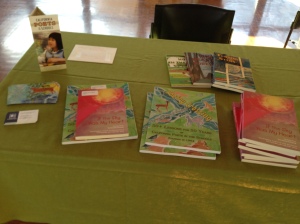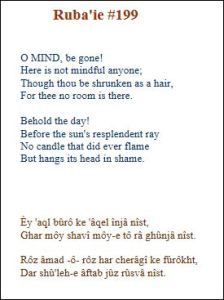On October 24, 2015, the Cupertino Library hosted a Diwali Celebration of song, dance, crafts, and food. Amanda Williamsen and Jennifer Swanton Brown (incoming and outgoing poets laureate) presented two poems, one each they had composed from comments and memories shared by visitors to the Cupertino Library booth at the Chamber of Commerce Diwali Festival the previous weekend. Many thanks to Gayathri Kanth, the Cupertino Community Librarian for inviting us and making us feel welcome.
Over 60 people left memories, feelings, thoughts, and drawings about Diwali. Amanda and Jennifer split them up and wrote poems that are complimentary in their style and substance. Here is Jennifer’s poem:
Diwali Voices
Diwali is, Latika reminds, the festival of joy and light,
which makes our lives even more bright.
Meera and her daughter eat lots of sweets –
the new lehenga is orange and gold –
and the henna tickles.
Aditri likes the colorful creative beautiful rangoli –
Diwali is the festival of lights,
which even small boys know
celebrates the victory of Rama.
On Diwali, I go to the temple –
Aarav celebrates with family and friends –
Sanyay does nothing and something –
Yash burns firecrackers.
Oh, the firecrackers!
Noopur lights candles,
Kashish puts lights outside the house
and everyone loves the firecrackers
everywhere. On Diwali I light firecrackers –
on Diwali I hold and play with friends
and do stick fireworks –
on Diwali we all fire firecrackers –
At Ria’s house there are 50 candles in the pool!
I feel more in touch with my community –
the lights fill me with warmth –
I study for an hour –
I have fun praying and celebrating our family –
I love Diwali –
I look forward to Diwali –
I call my friends to my house –
I decorate my house –
I celebrate I celebrate –
spreading happiness and love –
On Diwali, I wear a bright green saree
and listen to the voices of Cupertino.
Written with the voices of Cupertino residents from the October 17, 2015 Diwali Festival.
Visit the library in the upcoming months to see the collection of Diwali cards and the poems on display.
Here are some photos of scene on October 24th in the Community Hall. What a wonderful celebration.






















































